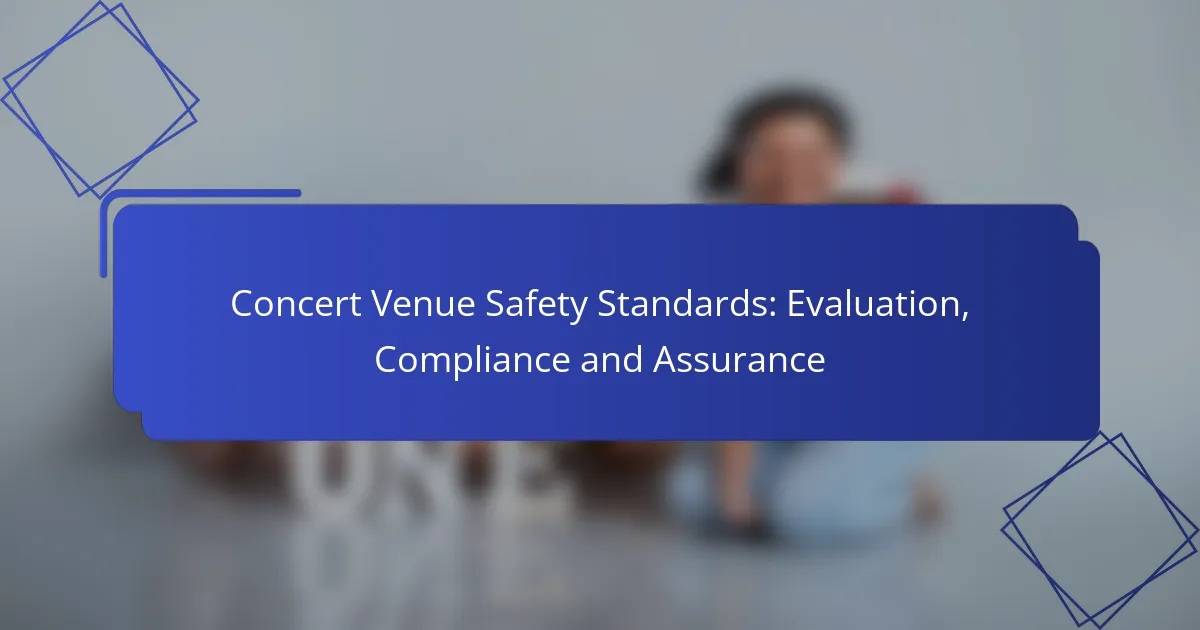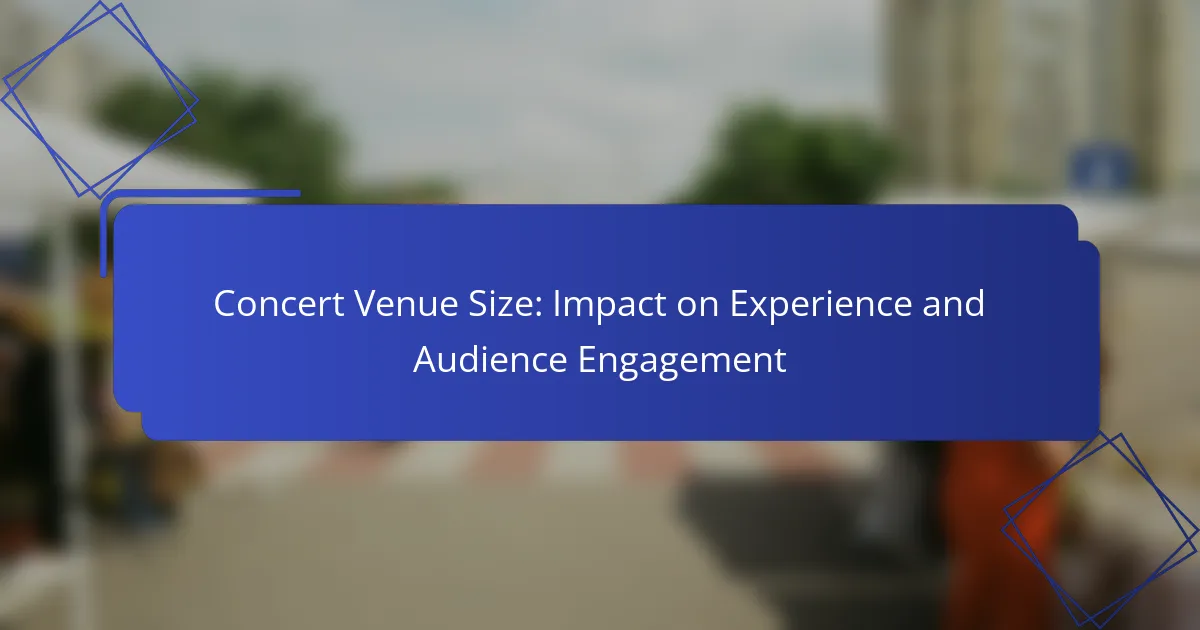Ensuring the safety of attendees, staff, and performers at concert venues is paramount, guided by key safety standards that cover health, safety, and accessibility. Compliance with these standards is achieved through systematic processes such as regular audits, staff training, and emergency response planning, which collectively enhance overall safety. By conducting thorough risk assessments and collaborating with local authorities, venues can effectively evaluate and maintain their safety protocols.
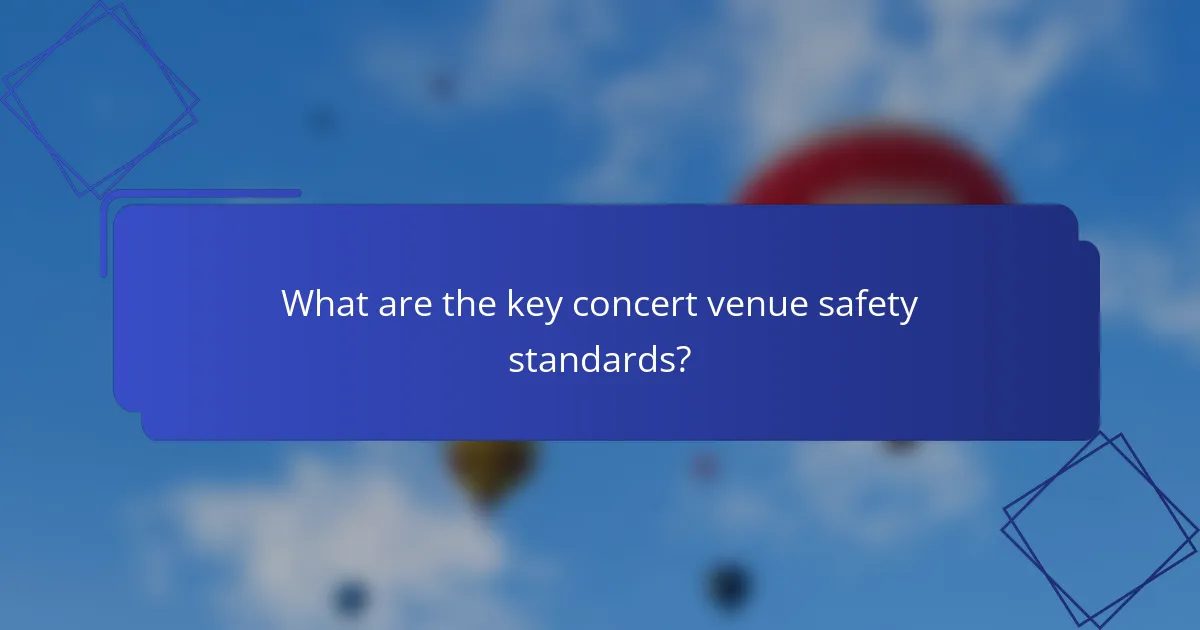
What are the key concert venue safety standards?
Key concert venue safety standards ensure the protection of attendees, staff, and performers. These standards encompass various regulations and guidelines that address health, safety, and accessibility in live event settings.
Occupational Safety and Health Administration (OSHA) guidelines
OSHA guidelines are crucial for maintaining a safe working environment in concert venues. They cover aspects such as proper training for staff, hazard communication, and the use of personal protective equipment (PPE).
Venues should conduct regular safety audits to ensure compliance with OSHA standards. This includes assessing potential hazards like electrical safety, crowd management, and emergency procedures.
National Fire Protection Association (NFPA) regulations
NFPA regulations focus on fire safety and prevention in public venues. These standards dictate the installation of fire alarms, sprinkler systems, and clear emergency exits to protect against fire hazards.
Concert venues must regularly inspect and maintain fire safety equipment. They should also provide staff training on fire response protocols and conduct emergency evacuation drills to prepare for potential incidents.
Americans with Disabilities Act (ADA) compliance
ADA compliance ensures that concert venues are accessible to individuals with disabilities. This includes features like wheelchair ramps, accessible seating, and appropriate signage throughout the venue.
Venues should evaluate their facilities to identify areas needing improvement for ADA compliance. Regular training for staff on how to assist guests with disabilities can enhance the overall experience and ensure legal adherence.
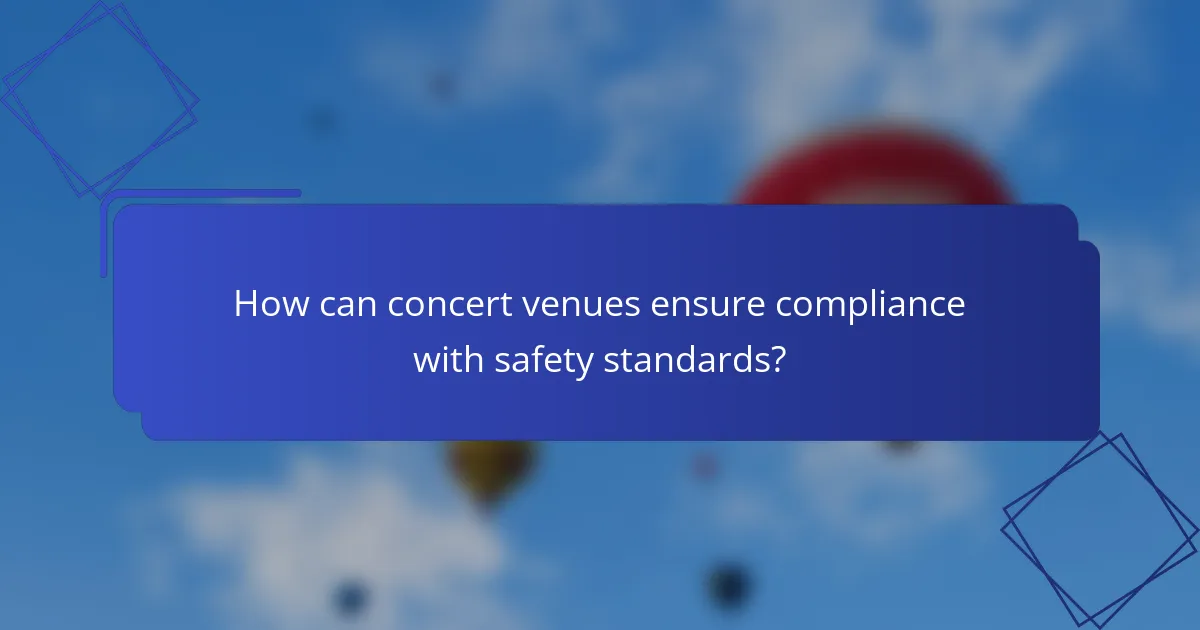
How can concert venues ensure compliance with safety standards?
Concert venues can ensure compliance with safety standards by implementing systematic processes that include regular audits, comprehensive staff training, and effective emergency response planning. These measures help identify risks, educate personnel, and prepare for potential incidents, ultimately enhancing safety for all attendees.
Regular safety audits
Conducting regular safety audits is essential for identifying potential hazards and ensuring compliance with safety regulations. These audits should be performed at least annually and can include assessments of structural integrity, fire safety systems, and crowd management protocols.
Venues should develop a checklist that covers key safety areas, such as emergency exits, equipment maintenance, and accessibility features. Engaging third-party safety experts can provide an objective evaluation and help pinpoint areas for improvement.
Staff training programs
Effective staff training programs are crucial for ensuring that all personnel understand safety protocols and their roles during emergencies. Training should cover topics such as crowd control, first aid, and evacuation procedures, with regular refreshers to keep knowledge current.
Consider using simulations and drills to prepare staff for real-life scenarios. This hands-on approach not only reinforces learning but also builds confidence among team members, ensuring they are ready to act swiftly in an emergency.
Emergency response planning
Developing a comprehensive emergency response plan is vital for concert venues to manage crises effectively. This plan should outline procedures for various scenarios, including medical emergencies, fire outbreaks, and severe weather events.
Collaboration with local emergency services can enhance the plan’s effectiveness. Regularly reviewing and updating the plan, along with conducting drills, ensures that staff and attendees are familiar with the procedures, ultimately minimizing risks during events.

What are the best practices for concert venue safety evaluations?
Best practices for concert venue safety evaluations include conducting thorough risk assessments, implementing effective incident reporting systems, and collaborating with local authorities. These practices ensure that venues meet safety standards and can respond effectively to emergencies.
Risk assessment protocols
Risk assessment protocols involve identifying potential hazards within the venue and evaluating their likelihood and impact. This process typically includes reviewing past incidents, assessing crowd management strategies, and examining structural safety features.
To implement effective risk assessments, venues should conduct regular evaluations, ideally before each major event. Utilizing checklists can help ensure all areas are covered, including emergency exits, fire safety equipment, and crowd control measures.
Incident reporting systems
Incident reporting systems are essential for documenting safety breaches or emergencies that occur during events. These systems should allow staff to report incidents quickly and efficiently, ensuring that all relevant details are captured for future analysis.
Venues should establish a clear protocol for reporting incidents, including who to notify and how to escalate issues. Regular training for staff on these procedures can enhance responsiveness and improve overall safety during events.
Collaboration with local authorities
Collaboration with local authorities, such as fire departments and law enforcement, is crucial for enhancing concert venue safety. Engaging these agencies in planning and safety evaluations can provide valuable insights and resources.
Venues should establish relationships with local emergency services and conduct joint safety drills. This cooperation not only improves preparedness but also ensures that all parties understand their roles in case of an emergency.

What technologies enhance concert venue safety?
Concert venue safety is significantly improved through various technologies that monitor, control, and communicate during events. Key systems include surveillance, access control, and emergency notification, each playing a crucial role in maintaining a secure environment for attendees and staff.
Surveillance systems
Surveillance systems utilize cameras and monitoring software to provide real-time visibility of the venue. These systems can detect unusual behavior, monitor crowd density, and ensure compliance with safety protocols.
Modern surveillance often includes features like facial recognition and analytics to enhance security. Venues should consider high-definition cameras with night vision capabilities, ensuring coverage of all critical areas, such as entrances, exits, and stages.
Access control solutions
Access control solutions manage who enters the venue and under what conditions. This includes ticket scanning, RFID wristbands, and biometric systems that verify identities and grant access only to authorized individuals.
Implementing a robust access control system can prevent unauthorized entry and enhance overall safety. Venues should regularly update their access protocols and ensure staff is trained to handle various scenarios, such as lost tickets or emergency evacuations.
Emergency notification systems
Emergency notification systems provide timely alerts to attendees and staff during critical situations. These systems can include loudspeakers, text message alerts, and mobile app notifications to disseminate information quickly and effectively.
It is essential for venues to have a clear communication plan that outlines how alerts will be issued and what actions should be taken. Regular drills and updates to the notification system can help ensure that everyone knows how to respond in an emergency.
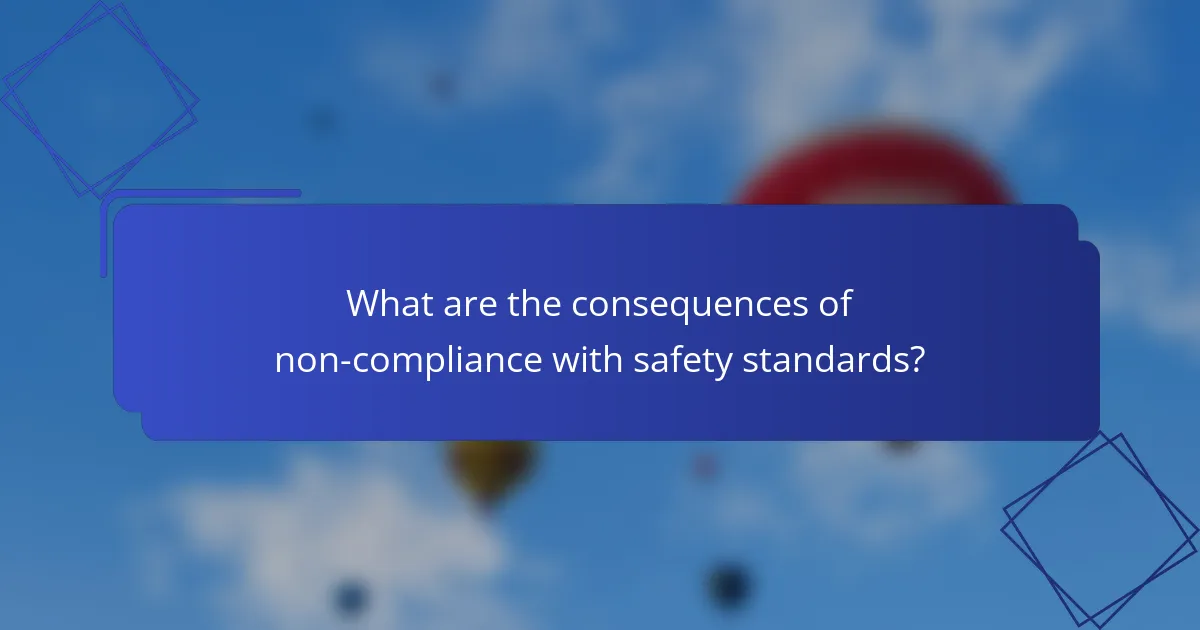
What are the consequences of non-compliance with safety standards?
Non-compliance with safety standards can lead to serious repercussions for concert venues, including legal penalties and significant damage to reputation. These consequences can affect not only the venue’s financial stability but also its ability to attract future events.
Legal penalties
Concert venues that fail to adhere to safety standards may face legal penalties, which can include fines, lawsuits, and even temporary or permanent closure. Regulatory bodies often impose these penalties to ensure compliance with local laws and safety regulations.
For example, fines can range from hundreds to thousands of dollars, depending on the severity of the violation. In some cases, repeated non-compliance can escalate to criminal charges against venue operators or management.
Reputation damage
Reputation damage is a critical consequence of non-compliance with safety standards, as it can lead to a loss of trust among patrons and event organizers. A venue known for safety violations may struggle to attract future events, resulting in decreased revenue and long-term financial challenges.
Negative publicity can spread quickly, especially through social media and news outlets. Venues should prioritize compliance to maintain a positive image and ensure ongoing patronage. Regular safety audits and transparent communication about safety measures can help mitigate reputation risks.
